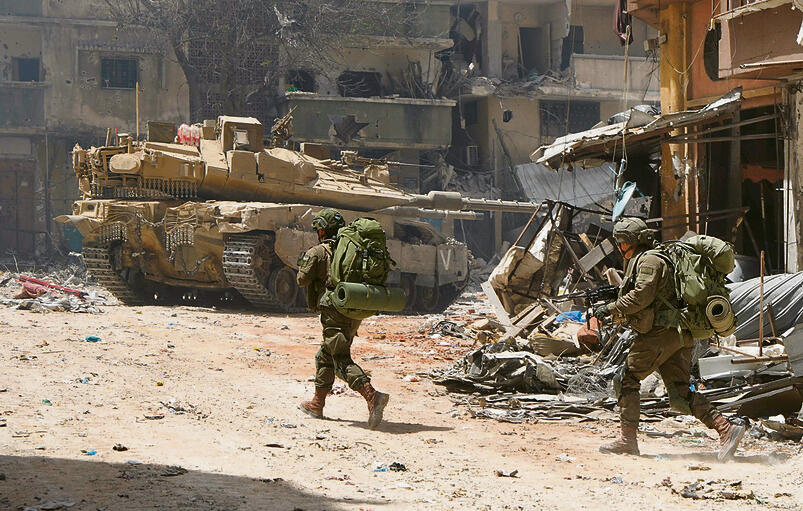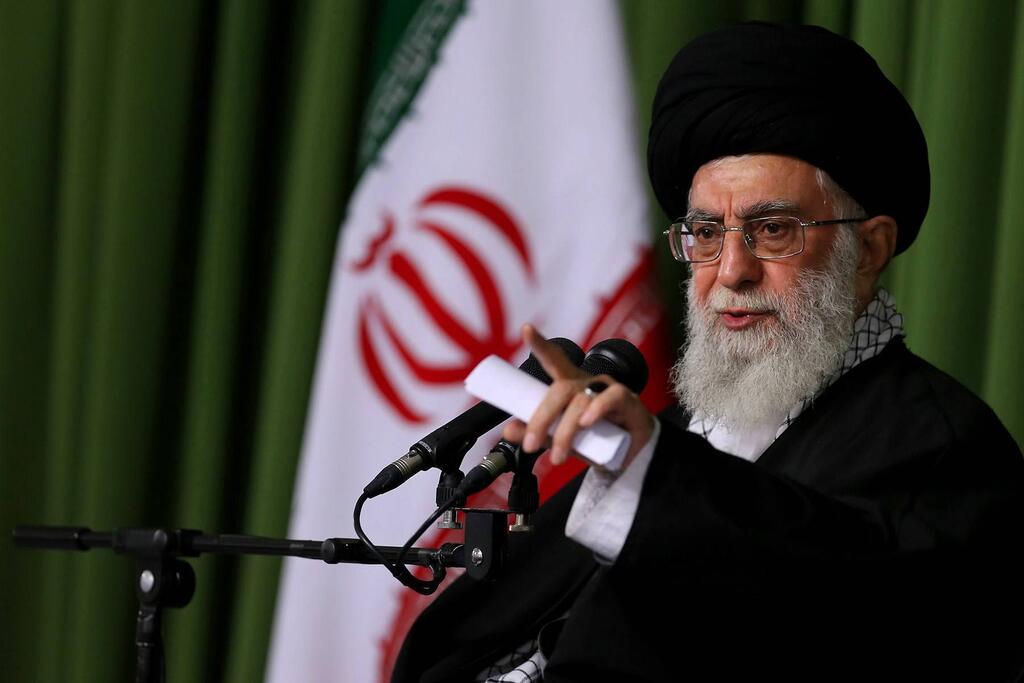Getting your Trinity Audio player ready...
Israel has a clear strategy guiding both the military and political leadership in its current multi-front war. This is the impression gained from conversations with senior defense and intelligence officials, as well as field visits in Gaza and Lebanon.
A note of caution: this strategy is not designed, nor does it aim, to deliver a "total victory" in the war, as Prime Minister Benjamin Netanyahu may have hoped while still in shock from the horrors of the October 7 attacks.
However, it is capable of significantly improving the national security of all Israeli citizens and making a substantial positive impact on the personal safety of residents in the Western Negev and the Galilee—especially the 80,000 Israelis who have been displaced from their homes.
The foundation of this strategy is the war's objectives, as formulated and approved by the Cabinet. These objectives, while intentionally vague due to political and coalition considerations, have been translated by the IDF into concrete terms.
For each front, the IDF established its "strategic purpose," as understood by the top generals based on the Cabinet's decisions. From this, the IDF determined the specific missions, resources and combat methods. While the tactics and means have evolved over the past year of fighting, the strategic purpose for each front has remained consistent.
The core principles of Israel’s political-security strategy are clear: the IDF will achieve military gains in Gaza and Lebanon that will compel the enemy on each front to seek, or even request, a diplomatic settlement to end the fighting on terms favorable to Israel and aligned with the Cabinet’s war objectives.
In the other five theaters, including Iran, the goal is to restore and strengthen the strategic deterrence that was severely eroded on October 7.
The transition from military success to a diplomatic resolution will be decided by the political leadership, specifically the prime minister, with Cabinet approval. In the other five theaters, including Iran, the goal is to restore and strengthen the strategic deterrence that was severely eroded on October 7.
The aim is to reestablish a situation where Israel's adversaries, as well as those sitting on the sidelines, see Israel as a power not worth confronting—and, if possible, one worth cooperating with.
Favorable terms in Lebanon
This strategy is advancing more quickly in Lebanon than in other theaters, with the IDF nearing a point where diplomatic negotiations for a cease-fire may soon be possible, according to defense sources. Preliminary talks have already begun with intermediaries and relevant parties.
This progress is largely due to the military achievements on the ground. The IDF has reportedly neutralized two-thirds of Hezbollah’s long-range missile capabilities and a significant portion of its short-range firepower.
Hezbollah and Shiite leaders in Lebanon have expressed willingness to agree to a cease-fire in southern Lebanon without linking it to the ongoing war in Gaza.
Additionally, Hezbollah’s elite Radwan Force and other terrorists have been pushed 5 to 8 kilometers (3 to 5 miles) back from the border, with some forces retreating north of the Litani River.
As a result, Hezbollah and Shiite leaders in Lebanon have expressed willingness to agree to a cease-fire in southern Lebanon without linking it to the ongoing war in Gaza. While the IDF believes there is room to further deepen its gains, the military has already submitted a proposal to the political leadership outlining Israel’s conditions for a potential agreement.
The defense establishment hopes a diplomatic resolution in Lebanon will include the following: the removal of Hezbollah’s Radwan Force and its direct fire capabilities beyond the Litani River; restrictions on Lebanese civilians approaching the border; an internationally backed arms embargo on transfers from Iran to Lebanon; the deployment of the Lebanese Army to the south, strengthened and equipped by the U.S. and European nations under close supervision; and most crucially, ensuring that Israel retains freedom of military and intelligence operations within Lebanon to enforce any cease-fire.
Unlike Gaza, the conditions in Lebanon are more conducive to a resolution. Lebanon has a government—albeit dysfunctional—with which negotiations are possible.
Unlike Gaza, the conditions in Lebanon are more conducive to a resolution. Lebanon has a government—albeit dysfunctional—with which negotiations are possible, and there is support for a settlement from key international players, including the U.S., France, Saudi Arabia and other moderate Sunni nations. These countries are willing to fund Lebanon’s reconstruction and push for political reforms.
Even Iran, Hezbollah’s patron, is reportedly interested in halting the fighting to allow Hezbollah time to regroup and rebuild its forces. Additionally, Hezbollah has been weakened, and both the Shiite community and broader Lebanese population, including over a million internally displaced people, are eager for a diplomatic settlement.
Far from a settlement in Gaza
Israel remains far from achieving its strategic objectives in Gaza, despite significant military advances. While Hamas and Palestinian Islamic Jihad (PIJ) have been largely dismantled as conventional military forces, both groups retain some active guerilla capabilities, and key elements of their infrastructure, including tunnels, remain intact.
Hamas continues to recruit terrorists and rebuild command centers in areas vacated by the IDF. More concerning, the group has not relinquished its civilian control over Gaza and is using international humanitarian aid as a tool of governance, distributing it selectively and even selling supplies to fund its operations.
There is no external force with enough influence over Hamas to secure the release of hostages or force the group to fully cede control of the Gaza Strip. Despite mediation efforts by the U.S., Qatar and Egypt, Hamas leader Yahya Sinwar has so far refused to engage in negotiations, leaving both Israel and Gaza’s residents at an impasse.
The military operation focused on Jabaliya has not achieved its full objectives. IDF officials admit that pressure on Hamas is insufficient and suggest that additional forces may be required to clear the remaining civilians.
The IDF recently launched an operation in northern Gaza, led by the 162nd Division, with Hamas claiming it is an attempt to implement the so-called “Generals' Plan” devised by retired IDF Maj. Gen. Giora Eiland.
The plan aims to push northern Gaza residents southward, followed by a blockade that would cut off humanitarian aid to those remaining, whom Israel could classify as combatants under international law. Although Israel has not officially confirmed this plan, it has not denied it either.
Currently, the military operation focused on Jabaliya has not achieved its full objectives. IDF officials admit that pressure on Hamas is insufficient and suggest that additional forces may be required to clear the remaining civilians and force Hamas into negotiations, possibly over hostages and an end to the fighting.
The primary challenge, however, remains finding an alternative to Hamas’ civilian rule, which the group clings to as the key to its survival and ability to rebuild. Hamas' grip on power is reinforced by its control over humanitarian aid distribution.
Israel is exploring options to wrest control of aid from Hamas, including the possibility of using a U.S. civilian company, under IDF protection, to deliver and manage aid distribution.
Various proposals are under consideration, but the defense establishment has made it clear that IDF troops will not be directly responsible for humanitarian aid distribution, to avoid risking soldiers' lives.
While not officially endorsed by the Cabinet, Israel’s undeclared war objective is to restore its strategic deterrence against the entire Shiite axis led by Iran. The IDF strikes on Hezbollah and Hamas have largely rebuilt much of the deterrence lost after the October 7 attacks. However, Iran—the "head of the snake" driving the ring of fire around Israel—remains neither fully deterred nor significantly weakened.
As for a formal alternative civilian government in Gaza, Israel acknowledges it does not want to assume control of the Palestinian enclave. Netanyahu’s office has also ruled out the Palestinian Authority (PA) as a potential governing force, not only due to opposition from far-right coalition partners Bezalel Smotrich and Itamar Ben-Gvir, but also because the PA, under Mahmoud Abbas, is seen as too weak to assert control over Hamas.
Israeli officials believe the PA would, at best, manage civilian affairs—such as education, healthcare and infrastructure—while allowing Hamas and PIJ to continue operating as armed factions, similar to the situation in Lebanon with Hezbollah. For Israel, this scenario is unacceptable.
Despite military successes, such as dismantling Hamas and PIJ’s armies and securing strategic corridors in Gaza, Netzarim and Philadelphi, Israel has no clear plan for dismantling Hamas' civilian control, which remains one of the key war objectives. The situation requires creative and flexible solutions that the current government, under Netanyahu, has yet to produce, largely due to political and personal constraints.
Deterring Iran
While not officially endorsed by the Cabinet, Israel’s undeclared war objective is to restore its strategic deterrence against the entire Shiite axis led by Iran. The IDF strikes on Hezbollah and Hamas have largely rebuilt much of the deterrence lost after the October 7 attacks.
However, Iran—the "head of the snake" driving the ring of fire around Israel—remains neither fully deterred nor significantly weakened. Although it has also taken hits, and the combined losses of Hamas and Hezbollah, along with Iran's missile attack failures, have sharply increased Israel’s deterrence, the goal is still not fully achieved. Much now depends on the impact of Israel's response to the Iranian missile strike on October 1.
A key factor in Israel’s deterrence, and its ability to achieve its war aims, is its relationship with the U.S. and international legitimacy. With the U.S. election race in full swing, Netanyahu—who, along with Strategic Affairs Minister Ron Dermer, is navigating Israel’s U.S. relations—must tread carefully.
While Netanyahu has made no secret of his hope for a Trump victory, he understands that Vice President Kamala Harris has a strong chance of winning, and thus must maintain good relations with her as well.
This explains why, according to The Washington Post, Israel informed the U.S. that it does not intend to target Iran’s oil or nuclear facilities in its retaliatory strikes. It also explains why Israel, at the request of the U.S. and France, has significantly reduced its airstrikes in Beirut to avoid harming American civilians.
The bottom line: Israel has a strategy that the IDF is implementing with some success, but the real challenges lie ahead in the coming months. There may be results by the end of the year, but a note of caution is warranted—Israel’s current government and coalition are unpredictable and could become an obstacle to a diplomatic resolution that would secure most of the war’s objectives.
Get the Ynetnews app on your smartphone:




